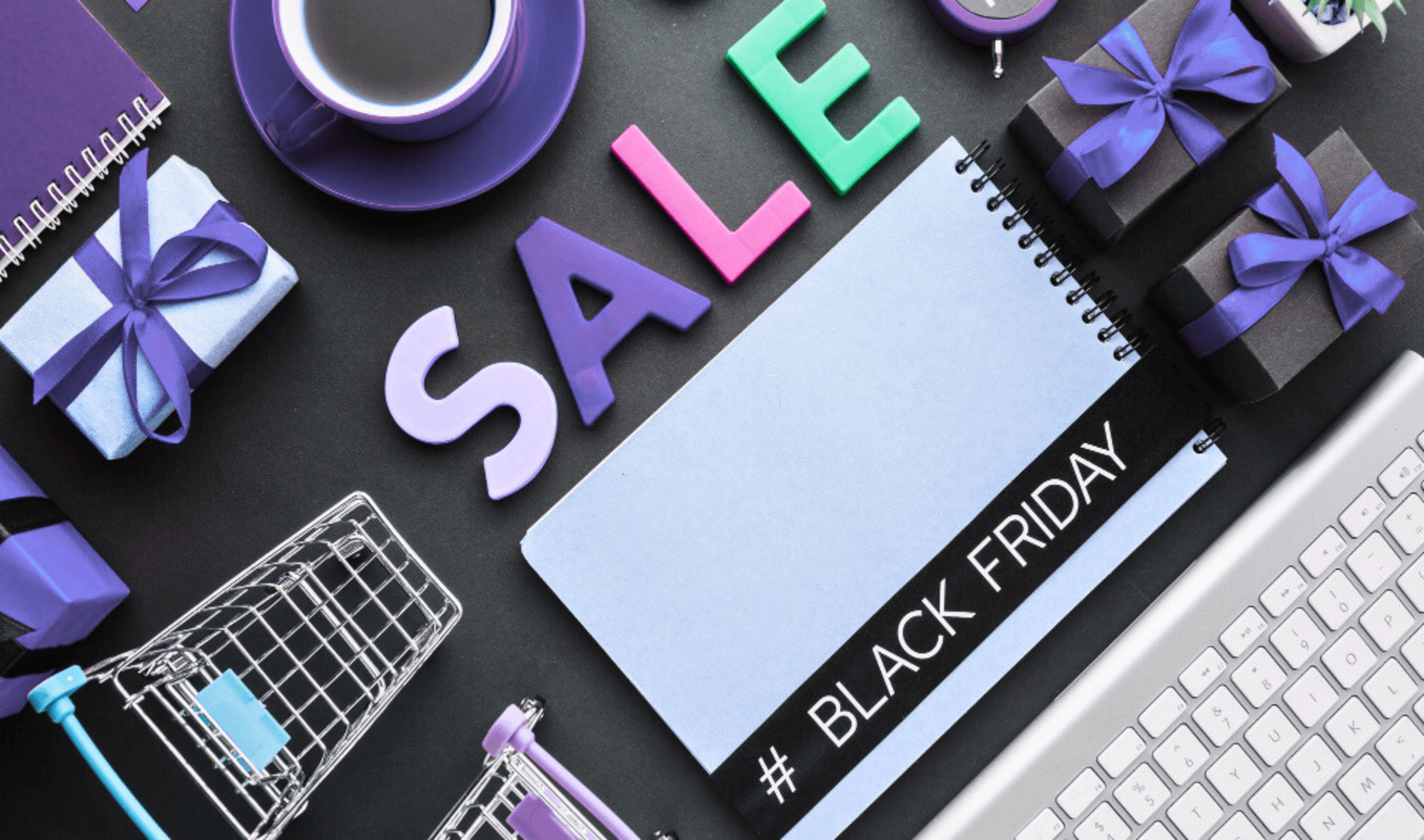Black Friday Marketing for 2024: Strategies for Success Through Cross-Channel Messaging

With the holiday shopping season around the corner, brands are once again setting their sights on Black Friday, the busiest retail day of the year. In recent years, cross-channel marketing has evolved as the go-to strategy, enabling brands to engage consumers across multiple platforms. For 2024, this approach is even more crucial, with consumers expecting a seamless experience regardless of the channel they’re using—whether it’s social media, email, mobile apps, or in-store visits.
This article projects potential Black Friday marketing strategies for 2024 based on 2023 Black Friday strategies and will offer insights to help brands stand out in this competitive season.
✅ For the Black Friday season, a consistent cross-channel marketing strategy using email, SMS, push notifications, and more is essential for driving customer engagement and increasing sales.
✅ Leveraging real-time data and behavioral analysis allows for personalized messages and tailored content that can significantly boost conversion rates.
✅ Instead of focusing solely on Black Friday, maintaining customer interest through extended campaigns across various channels from early November to late December is highly effective.
2023 Black Friday Marketing Success Stories
Before we discuss the 2024 Black Friday marketing outlook, let’s examine key success stories from last year. Here are examples of how global brands leveraged cross-channel marketing during Black Friday 2023 to boost customer engagement, increase sales, and improve customer satisfaction.
Case A - Cross-Channel Messaging for a Global Fashion E-commerce Brand
This global fashion e-commerce brand achieved impressive results by actively utilizing cross-channel marketing for its Black Friday promotions. They launched their campaign in early November, primarily targeting loyal customers over new ones by sending personalized messages through push notifications, in-app messages, and SMS channels to build excitement. Throughout the period, they ran various promotions, including discounts and early bird gift card coupons, capturing customer interest.
The brand used dynamic content in its email campaigns to recommend products based on customer’s past purchases and browsing history. Additionally, location-based push notifications were sent to app users near physical stores, notifying them of in-store discounts and boosting engagement both online and offline. Flash sales with limited timing on social media platforms like Instagram and TikTok created urgency and captured the attention of younger consumers. As a result, their total Black Friday sales increased by 30% compared to 2022.
Case B - Content-Driven Campaign for a Global Beauty Brand
In the beauty industry, content is a powerful tool for capturing consumer interest and driving purchases. A global beauty brand leveraged this by combining educational content, tutorials, and influencer partnerships in a successful Black Friday campaign. Four weeks before Black Friday, they started posting tutorial videos on YouTube and Instagram to demonstrate product use, with links directing viewers to Black Friday promotions on their landing page. These video tutorials and live demos helped pique consumer interest by offering a clear view of product application.
Additionally, the brand collaborated with influential beauty creators on Instagram and TikTok, providing authentic product reviews and exclusive discount codes to drive purchase intent. Through in-app messages, they offered exclusive discounts to loyal customers, encouraging them to enjoy personalized benefits. As a result, transactions through the mobile app increased by 40% compared to the previous year’s Black Friday.
Case C - Data-Driven Targeting for a Leading Electronics Brand
A well-known electronics retailer achieved strong results through data-driven customer segmentation in their 2023 Black Friday campaign. Analyzing previous customer behavior, from search activity to purchase history, they used an automated email trigger system to send targeted promotions for items customers had viewed or added to their carts. This helped remind customers of items they were interested in, increasing purchase likelihood.
Additionally, exclusive push notifications were sent to users who had abandoned items in their carts, offering special discounts to encourage checkout completion. Through these data-driven targeting strategies, this brand achieved significantly higher cart completion rates and increased Black Friday sales by 23% compared to the previous year.
2024 Black Friday Marketing Outlook
As demonstrated by the success stories from Black Friday 2023, cross-channel marketing has proven to be a powerful tool for boosting customer engagement and increasing sales. Global brands in fashion, beauty, and electronics achieved significant results by using personalized messages and data-driven strategies to capture customer interest and drive conversions. These brands engaged loyal customers with personalized alerts and content and used influencer collaborations and real-time targeting to maintain high engagement and sales growth throughout the Black Friday period.
Building on these insights, the key strategy for Black Friday 2024 will be cross-channel messaging and automated customer journey management aligned with evolving consumer expectations. More than ever, consumers expect a consistent and personalized experience across multiple channels—whether through email, SMS, in-app messages, or push notifications. To meet this demand, marketers need to create integrated customer journeys that deliver tailored messages at the right time across all channels.
Here are the primary trends expected to shape Black Friday marketing in 2024:
Seamless Cross-Channel Interactions: In 2024, consumers will expect consistent and personalized interactions across all channels, including email, SMS, in-app messages, and push notifications. Marketers can use cross-channel automation to link customer journeys, providing tailored experiences that maximize engagement and conversions. For example, if a customer browses products online and adds items to their cart but doesn’t complete the purchase, the brand could send a push notification encouraging them to visit a store, where they can view the item in person and participate in a Black Friday photo booth event for a chance to win prizes.
Real-Time Data and Behavioral Analysis: Brands can deliver dynamically adjusted, personalized content based on real-time data and behavioral insights. Predictive analytics enables brands to recommend products or offer targeted promotions based on customer interests, enhancing engagement. For instance, by analyzing a customer’s past purchases and browsing history, brands can send personalized emails with product recommendations and discounts that resonate with the customer’s preferences.
Mobile-Centric Shopping Experience: Mobile will continue to account for a significant portion of Black Friday traffic and purchases. To strengthen the mobile shopping experience, marketers should optimize in-app journeys and offer mobile-exclusive discounts. For example, they can provide exclusive promotions and discount codes to app users and guide them through the buying journey with push notifications, boosting conversion rates.
Optimized Messaging Timing: Brands are expected to fine-tune their messaging schedules and content based on data, providing tailored notifications that align with users’ locations, time zones, and activity patterns. In today’s global market, the primary audience for Black Friday is no longer limited to the U.S., so brands should consider consumers across different time zones. For example, during a previous promotion, a brand sent notifications to U.S. customers in the evening and adjusted the timing to match local hours for European customers, maintaining high engagement worldwide.
Extended Campaigns for Sustained Engagement: Successful seasonal promotions don’t end on a specific day; they create lasting impact. In 2024, extending holiday campaigns beyond Black Friday itself, from early November to the end of December, across multiple channels will help sustain customer interest. For example, a global sports brand offered early previews and pre-order events for limited-edition items before Black Friday, then continued with aggressive discount promotions until the end of December, keeping the momentum alive.
By aligning with these trends, brands can craft a more impactful and customer-centric Black Friday experience for 2024, creating seamless, personalized journeys that capture attention and drive conversions.
Final Thoughts
In 2024, a successful Black Friday strategy will be built on a well-coordinated cross-channel approach that emphasizes personalization, convenience, and customer journey optimization. By learning from the success of 2023 and staying ahead of these trends, brands can create impactful, customer-centric experiences throughout the holiday season.
FlareLane offers a robust suite of tools to elevate notification delivery and engagement. Our advanced push amplification ensures message reach even in challenging network conditions, while our customer journey feature enables brands to customize notifications based on user behavior, optimizing message timing and targeting for maximum impact.
Click the link below to learn more about cross-channel marketing today!


